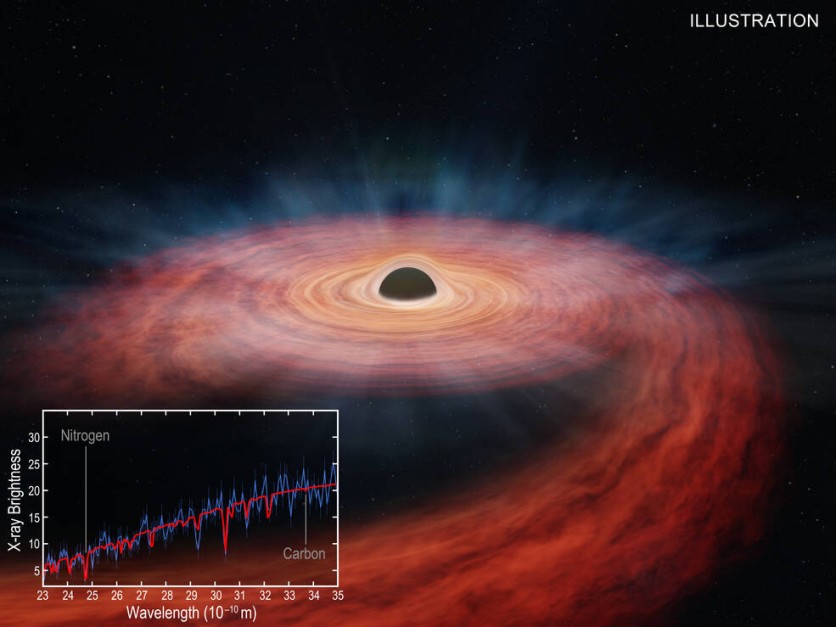Using NASA's Chandra X-ray Observatory and ESA's XMM-Newton, astronomers have conducted an in-depth analysis of a star that was torn apart due to its proximity to a massive black hole, resulting in its inner components being expelled into space.

NASA: Black Hole Disintegrates a Star
Researchers focused on studying the levels of nitrogen and carbon near a black hole known to have disintegrated a star. These elements are believed to have formed within the star prior to its fragmentation as it approached the black hole.
Jon Miller of the University of Michigan, who led the study, described the remnants as "the guts of what used to be a star," emphasizing that the preserved elements offer valuable clues to decipher the star's characteristics before its destruction.
In recent years, astronomers have identified numerous instances of "tidal disruption events," in which the gravitational forces exerted by a massive black hole obliterate a star, leading to luminous flares in optical and ultraviolet light as well as X-rays as the debris heats up.
Discovered in November 2014, ASASSN-14li was the nearest tidal disruption event to Earth at the time, located approximately 290 million light-years away. This proximity has enabled researchers to gain unprecedented insights into the characteristics of the destroyed star.
The study's authors applied novel theoretical models to enhance their estimations of the nitrogen and carbon quantities around the black hole. The research demonstrates how X-ray telescopes can function as investigative tools in space.
Brenna Mockler of Carnegie Observatories and the University of California, Los Angeles, noted that the relative proportion of nitrogen to carbon points to material originating from the interior of a star that weighed about three times the mass of the sun.
The ASASSN-14li star is, therefore, one of the most massive to have been torn apart by a black hole, offering valuable information for astronomers' understanding of such events.
'Scary Barbie'
While previous reports had mentioned the "Scary Barbie" event, suggesting a star with around 14 times the mass of the sun had been destroyed by a black hole, ASASSN-14li's extensive analysis distinguishes it.
Unlike the "Scary Barbie" case, ASASSN-14li's data is based on a comprehensive study of material around the black hole, enhancing the reliability of its conclusions. Additionally, according to NASA, the conclusions drawn from ASASSN-14li's findings hold significance for forthcoming studies.
Given the observation of moderately massive stars akin to ASASSN-14li within the star cluster encompassing the supermassive black hole situated at the core of our galaxy, the capacity to gauge the mass of stars disrupted by tidal forces could potentially aid in detecting the existence of star clusters encircling supermassive black holes in galaxies situated at greater distances.
This study also addresses prior concerns that X-ray-observed elements could have stemmed from gas emissions during previous eruptions from the supermassive black hole. However, the element pattern examined in this study appears to originate from a singular star, providing a more definitive insight.
Related Article : NASA's Chandra, Webb Create Cosmic Magic With New Stunning Images

ⓒ 2026 TECHTIMES.com All rights reserved. Do not reproduce without permission.




